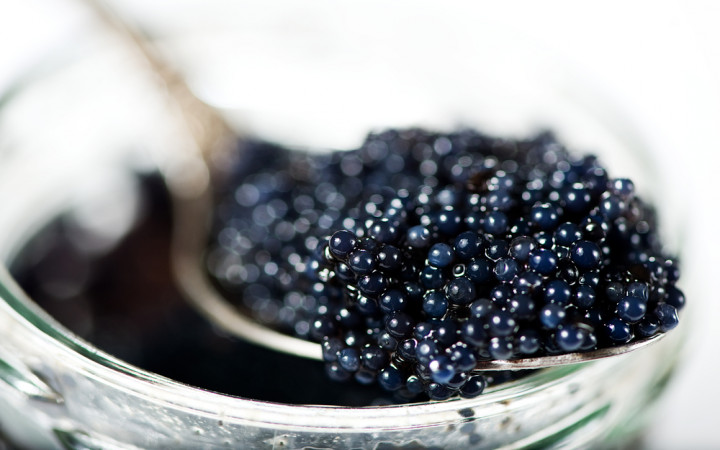Today’s Wonder of the Day was inspired by Roman. Roman Wonders, “what is caviar?” Thanks for WONDERing with us, Roman!
Are you hungry right now? What kind of treat would you like? A bowl of cereal? A slice of leftover pizza? An energy bar? Maybe a peanut butter and jelly sandwich? A spoonful of fish eggs?
What?! Fish eggs!? “Gross!" you might say. Believe it or not, though, certain fish eggs known as caviar are one of the world's most rare and expensive delicacies.
Known around the world as a luxury food, caviar is made up of the processed, salted, non-fertilized roe of certain types of fish. Roe are ripe egg masses that can be eaten fresh (non-pasteurized) or pasteurized. Pasteurized roe aren't nearly as valuable or tasty as fresh roe.
Traditional caviar comes from the roe of wild sturgeon fish from the Caspian and Black Seas. However, caviar can also be made from the roe of other fish, such as salmon, steelhead trout, and whitefish. Caviar from fish other than sturgeon, however, may be considered “substitute" caviar instead of true caviar.
Caviar is considered a luxury food because it is very expensive. Depending upon the quality of the caviar (as judged by flavor, size, consistency and color), prices can be as high as $8,000-$16,000 per kilogram!
Why is caviar so expensive? The fish (sturgeon) it comes from are endangered and rare. Plus, harvesting the fish for their eggs is a time-consuming and expensive process.
Caviar is often eaten as a garnish or spread on crackers or bread. It has been around since the time of the ancient Greeks and Romans. Throughout history, caviar was almost always reserved for the upper echelons of society.
That changed in the late 1800s when sturgeon were found to be plentiful in several rivers in the United States. By 1900, the U.S. was the world's largest producer of caviar. It was so plentiful that it was sometimes served free in western saloons.
Sturgeon were overfished for caviar, though, and their numbers began to decline quickly, both in the U.S. and around the world. By the 1960s, caviar prices had risen sharply again due to low supply.
Today, the rarest and most expensive caviar in the world comes from beluga sturgeon that live in the Caspian Sea. Beluga caviar is known for its soft, very large eggs that are usually silver or black.
So what does caviar taste like? Most people believe caviar has a salty, fishy taste that reminds them somewhat of salmon. Some people also believe it has a slightly gritty texture. Hungry for caviar now?




